Publication
Article
Psychiatric Times
The Neurobiology of Psychotherapy
Author(s):
An update on what happens in the brain when the mind is engaged in psychotherapy.
Table 1. Main brain system involved in mediating attachment
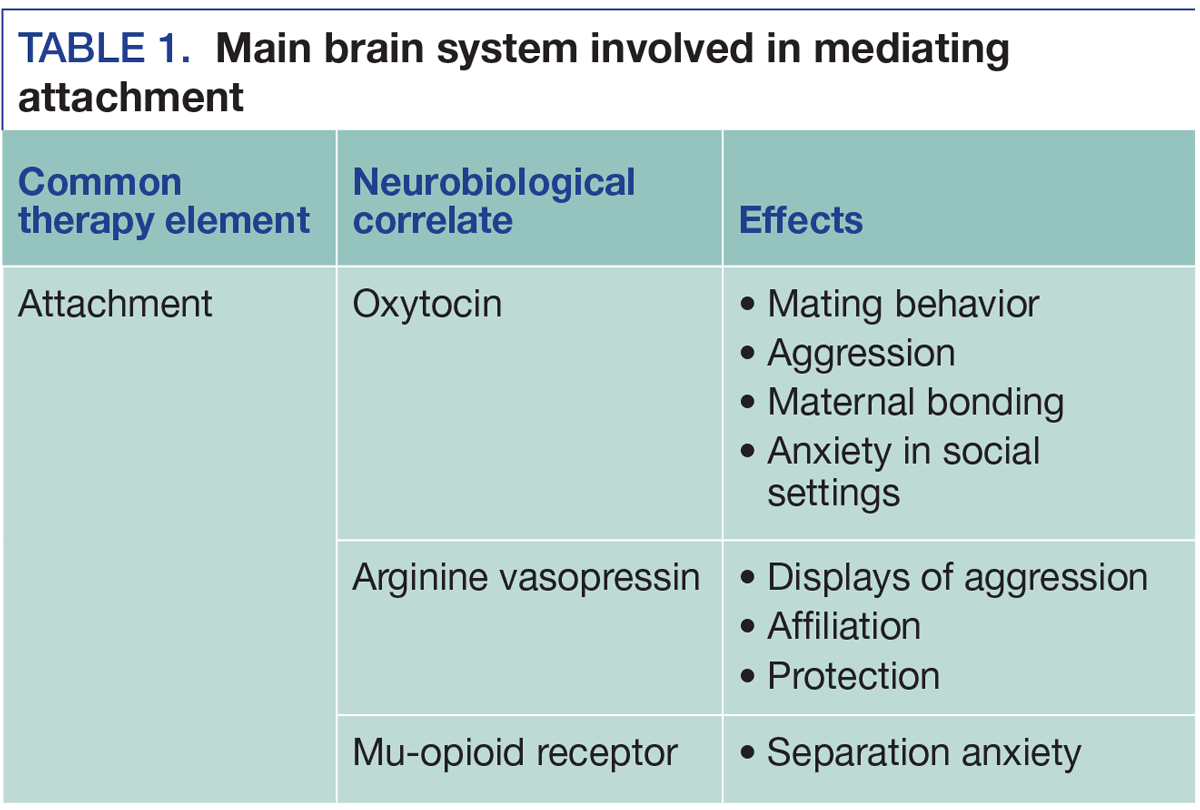
TABLE 2. Main brain system involved in mediating empathy
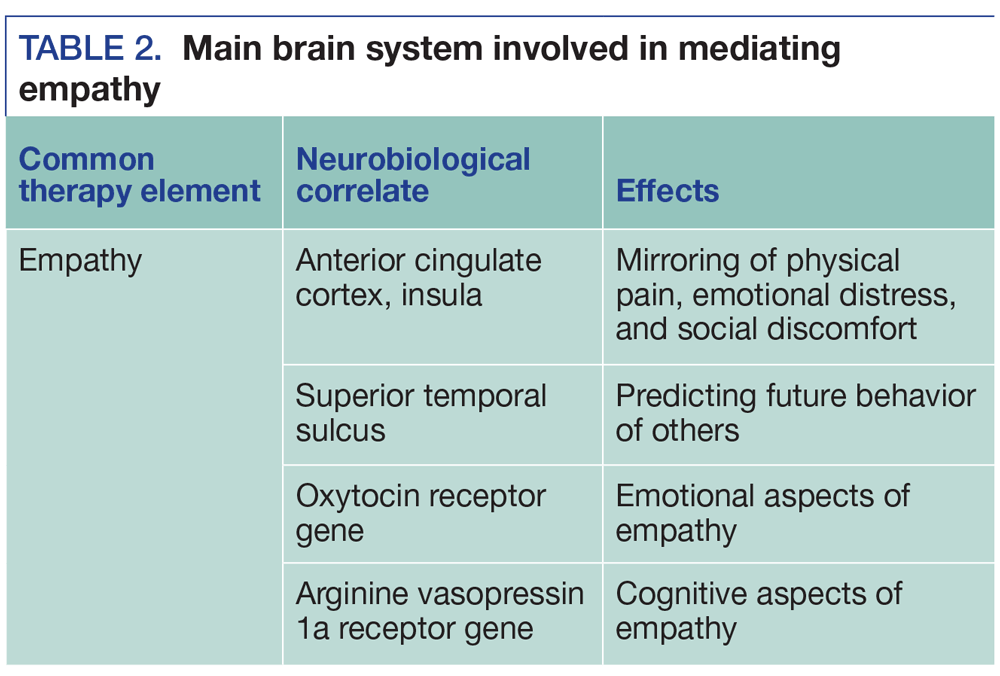
TABLE 3. Main brain system involved in mediating learning
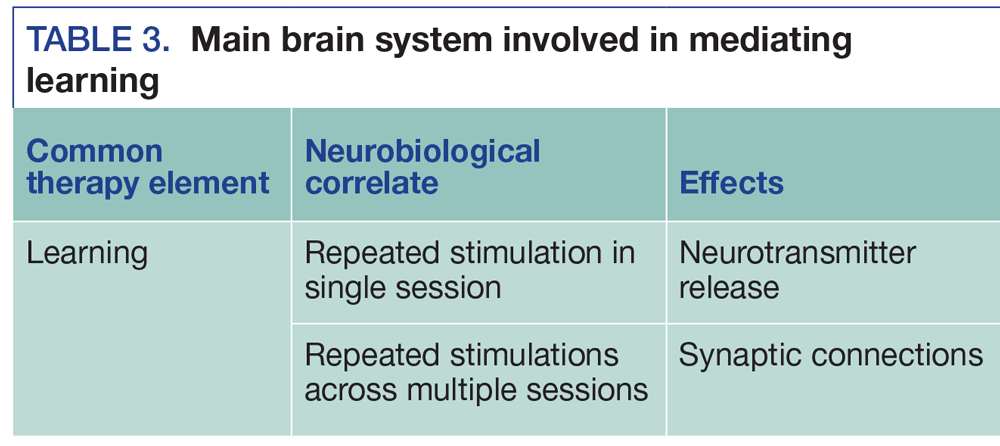
TABLE 4. Main brain system involved in mediating emotion regulation
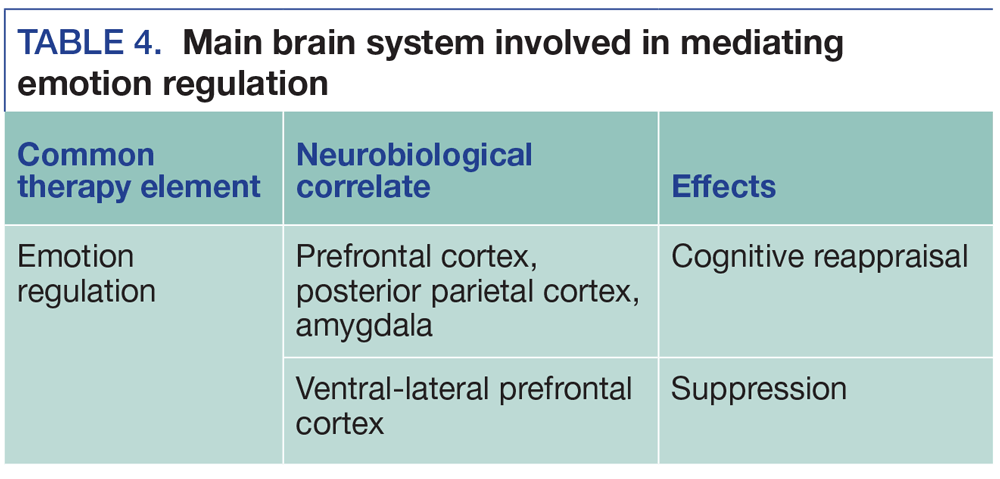
TABLE 5. Main brain system involved in mediating fear extinction
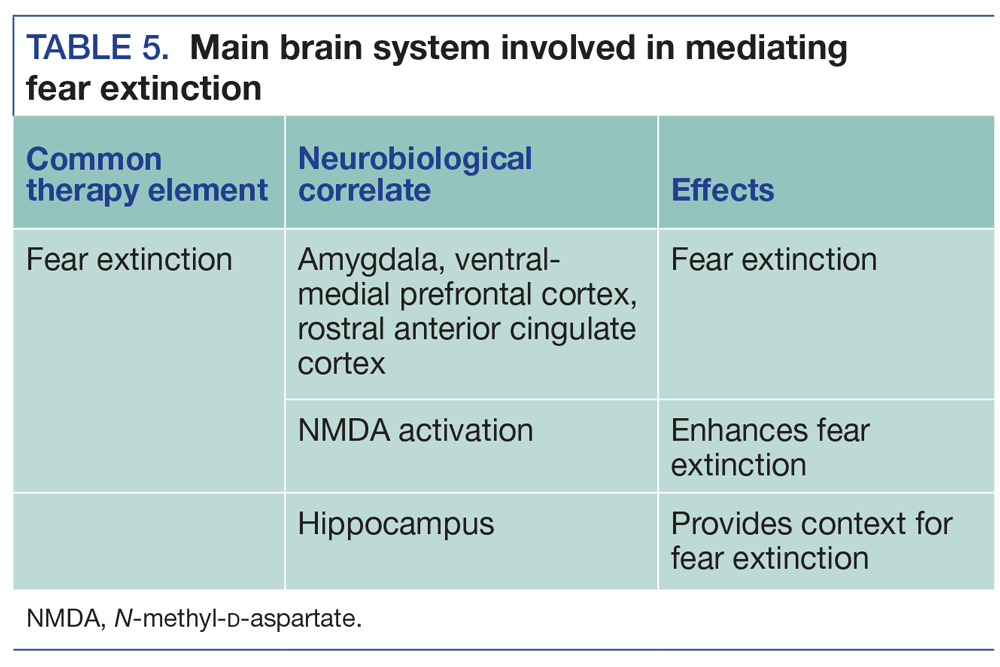
A recent Institute of Medicine report acknowledges the efficacy of a broad range of psychosocial interventions.1 It challenges us to “identify key elements that drive an intervention’s effect.” The report describes key clinical tasks such as the therapist’s ability to engage with a patient, understand the patient’s worldview, and help the patient manage his or her emotional responses. The psychiatric community should also look into the neurobiological changes that accompany and may be responsible for an intervention’s effect. Although early psychoanalysts made little effort to connect functions of the mind to definable portions of the brain, from the beginning there was a belief that such a relationship may exist. Freud confidently predicted that one day there would be a neurological understanding of the work he initiated.
The deficiencies in our description would probably vanish if we were already in a position to replace psychological terms by physiological or chemical ones. Biology is truly a land of unlimited possibilities. We may expect it to give us the most surprising information and we cannot guess what answers it will return in a few dozen years to the questions we have put to it.2
Almost 100 years have passed since Freud wrote those words, and many of his questions remain unanswered. Steady progress, however, has been made in the development of a neurobiological understanding of what happens in the brain when the mind is engaged in psychotherapy. Advances in cognitive neuroscience and neuroimaging have facilitated a greater appreciation of the neuroanatomy and neurophysiology of the CNS. The technology to study the real-time functioning of the brain through measurement of blood flow or glucose uptake, for example, has been widely used for a quarter of a century. Numerous challenges endure, such as subtle individual variations of neural circuitry, uncertainty as to the proper area to study, and the possibility that differing forms of therapy affect the brain differently. Within the boundaries created by these limitations, however, there is an emerging understanding of the neurobiological correlates of some common psychotherapy elements.
Although different approaches utilize various terms and concepts, there are some components that are found in most forms of efficacious psychotherapy. There must be some emotional engagement (attachment) between the patient and therapist. The therapist will struggle to understand and express the patient’s experience (empathy). By learning about themselves and their environment, patients will decide to make changes. As therapy continues, they will develop new abilities to regulate their emotions. Many patients will be forced to face and overcome feared relationships or situations (fear extinction). There is a neurobiological literature developing on each of these common components of psychotherapy.
Attachment
Forming nurturing attachments with others remains a challenge throughout life especially for those with early trauma. The neurochemistry of attachment involves the neuropeptides oxytocin and arginine vasopressin. Both of these messengers are released from the hypothalamus by sexual stimulation and stress. In combination with estrogen, oxytocin helps induce maternal behavior, while the absence of oxytocin makes it more difficult for animals to adapt to social settings and leads to abnormal displays of aggression. Infusing or blocking oxytocin also causes dramatic changes in mating behaviors. Arginine vasopressin has myriad effects on normal mammals including altering displays of aggression and the animal’s tendency to affiliate with or protect others.
In humans, oxytocin is associated with a number of factors that affect attachment including trust, empathy, eye contact, and generosity. Oxytocin infusions in healthy individuals tend to decrease anxiety and the stress associated with social situations while shifting attention from negative to positive information. The reduction in distress appears related to a reduction in activity in the amygdala. In a study of women with borderline personality disorder, oxytocin infusion decreased their amygdala activation when exposed to angry faces.3 Although the effect is mediated by past experiences, intra-nasal infusion of oxytocin may increase an individual’s ability to infer the mental state and intention of others based on their facial expression. Oxytocin specifically aids in parent-child bonding. Administering oxytocin to parents increases the social engagement of the parent and child and leads to an increase in oxytocin in the child.
The mu-opioid receptor also appears to be involved in attachment. Activation of the mu-opioid receptor leads to a general sense of pleasure as well as analgesia. In animal models, removing the mother from the child leads to distress that is at least partially mediated through mu-opioid activity. Animals with an increased activation of the opioid system had more attachment behaviors and louder and more prolonged protests when separated. Their separation distress could be partially reversed by non-sedating opioid agonists.4 Patients with borderline personality disorder have differences in baseline mu-opioid receptor concentrations and in the endogenous opioid system response to negative emotional challenges. These differences might be related to their difficulty with emotion regulation.
Attachment therefore correlates with neurochemical changes within the brain. This might be most evidenced in parent-child interactions but may play a significant role in psychotherapy as well. A study of mothers with postpartum depression undergoing psychodynamic psychotherapy found that daily infusions of oxytocin over 12 weeks were associated with a decrease in narcissistic traits but not in depressive personality traits or depressive symptoms.5 Depressed men who received oxytocin infusions while in psychotherapy performed better on tests of inferring the mental state of others but were more likely to experience anxiety during the session.6 These findings hint of a complex interaction between oxytocin and the therapist-patient relationship (Table 1).
Empathy
Empathy entails the ability to consider the world from another’s point of view and in some way to share his or her emotional experiences. Neurobiological correlates of empathy were first described in the early 1990s with the discovery of mirror neurons. Researchers who were studying the neuronal activity involved in organizing and monitoring movements noted that some of the same premotor cortex neurons were activated while observing others make corresponding movements.7,8 Neurons that were activated when a monkey grabbed food were activated when the researcher grabbed food but not when the researcher pushed or struck the food. These neurons were referred to as mirror neurons.
Mirror neurons in humans are not limited to simple movements. Watching dance leads to activation in the brains of other dancers. Greater activation occurs when dancers watch movements they already know. Mirror neurons activate while watching facial expressions and seem to be partially impaired in individuals with autistic disorders. Human mirroring networks also exist for pain and emotional distress. Researchers created pain by sticking subjects with a needle and monitored which areas of the brain were activated.9 Similar pathways were activated when the researchers brought the needle close to the subject but did not make contact and when subjects watched researchers pricking their own fingers. Witnessing others display disgust activates many of the same areas that are activated when one smells an unpleasant odor.
Mirroring neurons also fire when observing others being rejected or embarrassed. The areas most involved in mirroring physical pain, emotional distress, and social discomfort are the anterior cingulate cortex and insula. These areas help individuals automatically imagine themselves experiencing what they witness others experiencing. It should be noted that the studies of mirror neurons in humans are preliminary and not without controversy.
The posterior portions of the superior temporal sulcus have similar activities. This region activates when witnessing social behavior and predicting future actions. When a figure is walking toward you, activation of the superior temporal sulcus is greater when the figure is looking at you, which indicates the prospect of an upcoming interaction. Activation also increases when the other person’s behavior is different than expected.
In a study by Wyk and colleagues,10 an actor displayed pleasure or disgust to one of two identical objects and then randomly picked up one of the objects. When there was incongruent action (picking the object after showing disgust or not picking the object after a display of pleasure), there was increased activity in the observer’s posterior superior temporal sulcus region.
Experiencing empathy appears to require proper activation of portions of the insula and anterior cingulate cortex as we seek to understand the emotional experience of others. A properly functioning posterior superior temporal sulcus allows us to determine and predict the social actions of others, and will tend to activate when someone violates societal expectations.
Oxytocin and arginine vasopressin are also implicated in empathy. A study of polymorphisms in the genes of 367 young adults found that variations in the emotional aspect of empathy were associated with the oxytocin receptor gene, while the cognitive aspect of empathy was associated with the gene for the arginine vasopressin 1a receptor.11 A highly complex interaction of neurotransmitters and brain activation allows the therapist to understand the patient’s experience (Table 2).
Learning
Early in the 20th century Cajal proposed that the brain stored information by modifying neuronal connections. Learning involved changing individual neurons and their connections with each other. In the mid-20th century Hebb proposed his rule stating that when one neuron’s repeated excitation is involved in the excitation of a neighboring neuron, the connection between the two of them grows more efficient. Put colloquially, “Neurons that fire together wire together.” This implies that synapses change over time.
The first demonstration of this in the hippocampus occurred in 1973. After exposing neurons to strong, high-frequency stimulation, their connection to other neurons in the hippocampus became stronger.12 The discovery of hippocampal neurogenesis established the process of neuronal plasticity and upended the long-held belief that CNS cells were neurophysiologically and neuroanatomically incapable of growth.
Using the California sea slug (Aplysia californica), Kandel13 demonstrated that habituation-a decrease in response to a stimulus-could be attained with a single training session of 10 stimulations. These effects lasted minutes to hours and appeared to be a result of changes in the amount of neurotransmitter released with the stimulation. Training sessions on 4 consecutive days resulted in an effect that lasted weeks. This long-term learning was associated with changes in interneuronal connections.
Preliminary studies in humans have found measurable changes in the brain based on learning stemming from juggling and playing video games.14,15 Experimental data demonstrate that the neurons in the brain are capable of learning-induced change. Psychotherapy includes components of experiential and didactic learning that is expected to create change in the patient’s brain. Many psychotherapies focus on thoughts or patterns that are initially outside the awareness of the patient. Therapy creates new memories to modify older, dysfunctional ones and in some cases creates new psychic structures. This learning must involve changes in interneuronal connections (Table 3).
Emotion regulation
Patients in psychotherapy are taught to understand, accept, or manage their emotional responses in new ways. Researchers are looking into how emotion regulation modifies brain activity. One common strategy for altering emotions is reappraisal, when the individual deliberately tries to alter the meaning or relevance of an event. Reappraisal strategies link cognitive control with emotional experience. Attempts to deliberately decrease aversive emotions, sadness, and sexual arousal through cognitive reappraisal have found that reappraisal strategies most commonly activate multiple areas within the prefrontal cortex and posterior parietal cortex. Activation of these areas during reappraisal leads to decreased activity in portions of the amygdala. These studies have demonstrated specific neuronal circuitry, for example, between the hippocampus, prefrontal cortex, and amygdala, which are strengthened by psychotherapeutic treatment.16,17
Suppression, an intentional attempt to minimize the display of emotions, may also decrease the intensity of emotions. Subjects were asked to suppress their emotions while observing sad pictures. When suppressing their emotions, there was an increase in activity in the right orbitofrontal and dorsolateral prefrontal cortices.18 Other studies have found activation of the dorsal anterior cingulate cortex, dorsomedial prefrontal cortex, and lateral prefrontal cortex with suppression.19
Cognitive reappraisal and suppression seem to have distinctly different neurophysiological mechanisms. In a head-to-head study both strategies were successful at decreasing subjective emotional experience, but there were differences in brain activation.20 Reappraisal led to increased activity in the prefrontal cortex and decreased activity in the right amygdala and left insula. Suppression increased activity in the right ventral-lateral prefrontal cortex but did not decrease activity in the amygdala or insula (Table 4).
Fear extinction
Learning to be afraid, or fear conditioning, involves pairing a previously innocuous stimulus (conditioned stimulus) with an aversive stimulus (unconditioned stimulus). The mind begins to associate the previously benign stimulus with the unpleasant one, and the individual experiences heightened anxiety whenever presented with the new conditioned stimulus. The process of fear conditioning involves interactions of the amygdala, insula, anterior cingulate cortex, and medial prefrontal cortex.
The process of unlearning fear is known as fear extinction. Fear extinction does not consist of erasing old memories; rather it is the creation of new, benign associations. The underlying fear is still present, but successful fear extinction leads to a reduction in the amplitude and likelihood of a fearful response. This occurs when the once feared stimulus or situation no longer brings about any adverse consequences. Fear extinction is a principal therapeutic component of exposure therapies for specific phobias and for PTSD, but learning to confront feared memories, situations, and people can be found in a broad range of psychotherapies.
Fear extinction requires a functional ventral-medial prefrontal cortex, rostral anterior cingulate cortex, and hippocampus. Activation of these regions leads to decreased amygdala activity. Clinical studies have demonstrated that the addition of D-cycloserine, a partial N-methyl-D-aspartate (NMDA) glutamate agonist, may improve outcomes in exposure-based therapies for acrophobia and social phobias.21 Conversely, NMDA antagonists, by decreasing NMDA activity, can inhibit the formation of long-term fear extinction.
While decreasing the activity in the amygdala leads to an acute reduction in perceived fear, the long-term persistence of fear extinction requires the activity of the ventral-medial prefrontal cortex and rostral anterior cingulate cortex. These appear to be vital in connecting the cognitive and emotional experiences and solidifying the learning.
The hippocampus aids in fear extinction by placing events into a context. This context helps determine how generally the brain applies the new learning. Because the previous fear is not erased, when the individual encounters the once feared stimuli there is activation of both the fearful and fear extinguished pathways. The context, provided by interactions between the hippocampus and ventromedial prefrontal cortex, determines which set of behaviors is predominately activated (Table 5). The work of the psychotherapist is to help solidify the most healthy and adaptive responses.
Prediction of response to psychotherapy
Studies have begun to examine the ability to predict a patient’s response to psychotherapy based on neurobiological factors. One of the many changes that occur with depression is the elevation of metabolism in the posterior insula. Studies have found that changes in connectivity and activation of the insula predicted a positive response to psychotherapy in patients with depression.22-24 Another study found that increased metabolism in the subcollasal cingulate cortex and superior temporal sulcus was associated with no response to escitalopram or cognitive-behavior therapy treatment for depression.25
Conclusion
Although a precise description of the neurophysiological changes that occur during psychotherapy is currently impossible, it is likely that future imaging and neurobiological investigation will elucidate this process. The neurobiological correlates to many of the common elements of psychotherapy such as attachment, empathy, memory, learning, emotional regulation, and fear extinction are emerging. While we still cannot answer all of Freud’s questions, or our own questions, the artificial dichotomy between the functioning of the mind and brain during psychotherapy seems less imposing.
Disclosures:
Dr Welton is Associate Professor of Psychiatry and Director of Residency Training and Dr Kay is Emeritus Professor of Psychiatry, Boonshoft School of Medicine, Wright State University, Dayton, OH. The authors report no conflicts of interest concerning the subject matter of this article.
References:
1. Institute of Medicine. Psychosocial Interventions for Mental and Substance Use Disorders: A Framework for Establishing Evidence-Based Standards. Washington, DC: The National Academies Press; 2015:S1-S16.
2. Freud S. Beyond the pleasure principle. In: Strachey J, ed. The Standard Edition of the Complete Psychological Works of Sigmund Freud. Vol 18. London: Hogarth Press; 1955:1-64.
3. Bertsch K, Gamer M, Schmidt B, et al. Oxytocin and reduction of social threat hypersensitivity in women with borderline personality disorder. Am J Psychiatry. 2013;170:1169-1177.
4. Barr CS, Schwandt ML, Lindell SG, et al. Variation at the mu-opioid receptor gene (OPRM1) influences attachment behavior in infant primates. Proc Natl Acad Sci USA. 2008;105:5277-5281.
5. Clarici A, Pellizzoni S, Guaschino S, et al. Intranasal administration of oxytocin in postnatal depression: implications for psychodynamic psychotherapy from a randomized double-blind pilot study. Front Psychiatry. 2015;6:1-10.
6. MacDonald K, MacDonald TM, Brune M, et al. Oxytocin and psychotherapy: a pilot study of its physiological, behavioral and subjective effects in males with depression. Psychoneuroendocrinol. 2013;38:2831-2843.
7. Rizzolatti G, Fadiga L, Gallese V, Fogassi L. Premotor cortex and the recognition of motor actions. Cog Brain Res. 1996;3:131-141.
8. Iacoboni M. Face to face: the neural basis of social mirroring and empathy. Psychiatr Ann. 2007;37: 236-241.
9. Hutchison WD, Davis KD, Lozano AM, et al. Pain-related neurons in the human cingulate cortex. Nature Neurosci. 1999;2:403-405.
10. Wyk BC, Hudac CM, Carter EJ, et al. Action understanding in the superior temporal sulcus region. Psychol Sci. 2009;20:771-777.
11. Uzefovsky F, Shalev I, Israel S, et al. Oxytocin receptor and vasopressin receptor 1a genes are respectively associated with the emotional and cognitive empathy. Horm Behav. 2015;67:60-65.
12. Bliss TVP, Collingridge GL. A synaptic model of memory: long-term potentiation in the hippocampus. Nature. 1993;361:31-39.
13. Kandel ER. Psychotherapy and the single synapse: the impact of psychiatric thought on neurobiological research. J Neuropsychiatry Clin Neurosci. 2001;13:290-300.
14. Draganski B, Gaser C, Busch V, et al. Neuroplasticity: changes in grey matter induced by training. Nature. 2004;427:311-312.
15. Kuhn S, Gleich T, Lorenz RC, et al. Playing Super Mario induces structural brain plasticity: gray matter changes resulting from training with a commercial video game. Mol Psychiatry. 2014;19:272.
16. Ochsner KN, Ray RD, Cooper JC, et al. For better or for worse: neural systems supporting the cognitive down- and up-regulation of negative emotion. Neuroimage. 2004;23:483-499.
17. Buhle JT, Silvers JA, Wager TD, et al. Cognitive reappraisal of emotion: a meta-analysis of human neuroimaging studies. Cerebral Cortex. 2014;24: 2891-2890.
18. Levesque J, Eugene F, Joanette Y, et al. Neural circuitry underlying voluntary suppression of sadness. Biol Psychiatry. 2003;53:502-510.
19. Phan KL, Fitzgerald DA, Nathan PJ, et al. Neural substrates for voluntary suppression of negative affect: a functional magnetic resonance imaging study. Biol Psychiatry. 2005;57:210-219.
20. Goldin PR, McRae K, Ramel W, Gross JJ. The neural bases of emotion regulation: reappraisal and suppression of negative emotion. Biol Psychiatry. 2008;63:577-586.
21. Britton JC, Gold AL, Feczko EJ, et al. D-cycloserine inhibits amygdala responses during repeated presentations of faces. CNS Spect. 2007;12:600-605.
22. Roffman JL, Witte JM, Tanner AS, et al. Neural predictors of successful brief psychodynamic psychotherapy for persistent depression. Psychother Psychosom. 2014;83:364-370.
23. Crowther A, Smoski MJ, Minkel J, et al. Resting-state connectivity predictors of response to psychotherapy in major depressive disorder. Neuropsychopharmacol. 2015;40:1659-1673.
24. McGrath CL, Kelley ME, Holtzheimer PE 3rd, et al. Toward a neuroimaging treatment selection biomarker for major depressive disorder. JAMA Psychiatry. 2013;70:821-829.
25. McGrath CL, Kelley ME, Dunlop BW, et al. Pretreatment brain states identify likely nonresponse to standard treatments for depression. Biol Psychiatry. 2014;76:527-535.






